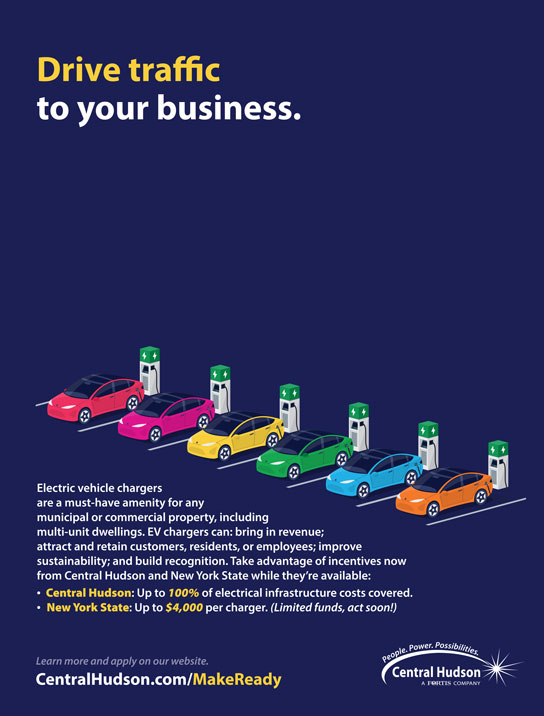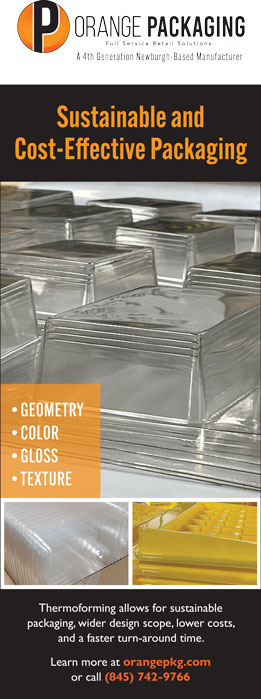NEWS, RULES, REGULATIONS AND LEGISLATION
THE MANUFACTURING ECONOMY
J.P.Morgan Global Manufacturing PMI™: Downturn in Sector is Slowing
The J.P. Morgan Global Manufacturing PMI™ improved from 48.6 in July to 49.0 in August, stabilizing a bit but contracting for the twelfth consecutive month. The declines for new orders (up from 47.6 to 48.1), output (up from 48.9 to 49.4) and exports (up from 46.4 to 47.0) slowed somewhat in August, and employment (up from 50.1 to 50.6) grew for the second straight month. Survey respondents remained positive in their outlook for future output (down from 60.8 to 59.6), albeit with some easing in confidence for the month. Delivery times (down from 51.9 to 51.2) narrowed for the seventh straight month in August despite some slowing, another sign that supply chain bottlenecks have improved.
Three of the top 10 markets for U.S.-manufactured goods experienced expanding growth in the sector in August, up from just one (Mexico) in July. Brazil eked out an ever-so-slight expansion in August for the first time since October 2022, and China rebounded, growing for the third time in the past four months. Overall, the data was mixed. Five of the top 10 markets had higher PMI readings in August than in July, four had lower and one was unchanged.
Activity Little Changed in September Empire State Manufacturing Survey
Manufacturing activity held steady in New York State, according to the September survey. After dropping sharply last month, the general business conditions index reversed course and climbed twenty-one points to 1.9.
- The new orders index shot up twenty-five points to 5.1, and the shipments index also rose twenty-five points to 12.4, pointing to an increase in orders and shipments.
- The unfilled orders index remained below zero at -5.2, a sign that unfilled orders continued to decline. Similarly, the inventories index came in at -6.2, indicating that inventories contracted again. The delivery times index ticked up to 2.1, suggesting little change in delivery times.
- The index for number of employees came in at -2.7, indicating a slight decline in employment levels.
- The prices paid index held steady at 25.8, pointing to little change in the pace of input price increases, while the prices received index rose seven points to 19.6, signaling a modest pickup in the pace of selling price increases.
- New orders and shipments are expected to increase significantly in the months ahead, and employment is expected to grow.
Fed Holds Steady, Project Rates Will Stay Higher for Longer in 2024
Federal Reserve officials voted to hold interest rates steady at a 22-year high at its September meeting but signaled they were prepared to raise rates once more this year to combat inflation. Fed officials raised their benchmark federal-funds rate at their previous meeting in July to a range between 5.25% and 5.5%. They began lifting rates from near zero in March 2022.
With economic activity stronger than anticipated, most officials also expected they would need to maintain interest rates near their current level through next year, according to projections released at the conclusion of their two-day policy meeting. Officials projected stronger economic growth for this year and next, and they now expect a smaller rise in unemployment compared with their June projections.
Most officials see the unemployment rate, which was 3.8% in August, rising to 4.1% next year, a lower level than they projected in June. Their projection for annual core inflation, which excludes volatile food and energy prices, edged down to 3.7% for the fourth quarter, compared with their June projection of 3.9%.
NAM Survey: Manufacturer Optimism Declines
The National Association of Manufacturers Q3 2023 Manufacturers’ Outlook Survey showed manufacturers’ with the lowest level of optimism among NAM members since Q2 2020. The sector continues to confront a tight labor market, unbalanced federal regulations and critical policy debates in Congress. The NAM conducted the survey from August 17 to August 31, 2023.
- Only 65.1% of respondents felt positive in their company’s outlook, edging down from 67.0% in the second quarter.
- It was the fourth straight reading below the historical average (74.9%).
- Concern about an unfavorable business climate was the highest in six years (Q2 2017).
- The survey found that 69.1% of small manufacturers, and 63.2% of all respondents, would hire more workers or increase compensation if the regulatory burden decreased.
- More than 70% of manufacturers would purchase more capital equipment if the regulatory burden on manufacturers decreased, with 48.6% increasing compensation, 48.6% hiring more workers, 42.5% expanding their U.S. facilities and 38.4% investing in research.
- The top challenges facing manufacturers include attracting and retaining a quality workforce (72.1%), weaker domestic economy (60.7%), rising health care/insurance costs (60.1%), unfavorable business climate (56.7%), increased raw material costs (45.5%) and supply chain challenges (37.8%).
Global Debt Hits Record $307 Trillion, Debt Ratios Climb -IIF
Global debt hit a record $307 trillion in the second quarter of the year despite rising interest rates curbing bank credit, with markets such as the United States and Japan driving the rise, the Institute of International Finance (IIF) said last month. The financial services trade group said in a report that global debt in dollar terms had risen by $10 trillion in the first half of 2023 and by $100 trillion over the past decade.
It said the latest increase has lifted the global debt-to-GDP ratio for a second straight quarter to 336%. Prior to 2023, the debt ratio had been declining for seven quarters. More than 80% of the latest debt build up had come from the developed world with the U.S., Japan, Britain, and France registering the largest increases. Among emerging markets, the biggest rises came from the largest economies, namely China, India, and Brazil.
CLIMATE, ENVIRONMENT, SAFETY AND HEALTH
Climate Week 2023 – No New Fortune 500 Net Zero Commitments
Climate Week in New York was in September. After an explosion of commitments to net zero in 2020 and 2021, business momentum stalled. According a report from Climate Impact Partners, there were no new commitments made in the last year, stalling the percentage of Fortune Global 500 companies that have made significant climate commitments at 66%.
“The backlash (against ESG) is having an effect…The uncertainty—whether due to lack of clarity around SEC reporting, around the expense, around how you link these actions to the company’s bottom line—is causing everybody to pause,” according to Sheri Hickok, CEO of Climate Impact Partners. However, the report also shows 76% of the Fortune Global 500 now report on annual emissions, with 55% of them even reporting on the vexing Scope 3 emissions (emissions from suppliers and customers).
NYS Comptroller DiNapoli: State Falling Short on Renewable Electricity Goals
New York state will have to take multiple steps to increase renewable electricity generation to achieve the objectives of the Climate Leadership and Community Protection Act (CLCPA). Success will also require state agencies to consistently and proactively identify and address problems, continue streamlining permit and interconnection study procedures, and develop the necessary infrastructure to connect renewable projects to the grid and New Yorkers’ homes, according to a report issued in September by State Comptroller Thomas P. DiNapoli.
DiNapoli’s report found that renewable generators in New York would need to produce an additional 78,073-gigawatt hours above 2022 levels, an increase of over 200%, to reach the CLCPA’s 2030 goal of 70% renewable electricity consumption. The analysis is based on projections from the New York Independent System Operator (NYISO).
NYISO has also projected that the state would need to add 20 gigawatts of installed renewable capacity by 2030, which is triple the 2022 capacity of approximately 6.5 gigawatts. In the last 20 years, New York added 12.9 gigawatts of total electric generation, including both fossil fuel and renewable sources.
OSHA Plans to Make Injury Data Available Online
If allowed to stand by the courts, a rulemaking issued recently by the Occupational Safety and Health Administration (OSHA) will require employers to expose their reported accident illness and report data on the Internet, making it available to union organizers, personal injury lawyers, and their competitors. Scheduled to largely take effect on Jan. 1, 2024, it applies to employers with 100 or more workers in industries the agency defines as “high hazard,” although the list of these industries that OSHA provides appears to cover very nearly every employer in America today.
“With the new online availability of these records, employees, former employees and their representatives will be able to review your recordkeeping decisions by directly accessing the OSHA website without involving you,” explain attorneys who work for firm of Constangy, Brooks, Smith & Prophete.
Another complaint raised in the legal challenges that were brought against the agency that could be resurrected this time around is the enormous cost to employers of adhering to the new rules, a subject remarked on by legal analysts as well. Employer attorneys advise covered organizations to begin preparing now for next year’s reporting requirements.
OSHA Announces Heat “Framework,” Employer Obligations Will Rise With the Temperature
On August 30, 2023, OSHA released a “Regulatory Framework” meant to outline potential options for the elements of a future OSHA standard. This framework shows that OSHA is focused on a programmatic standard where employers are required to create a plan to evaluate and control heat hazards in their workplaces, but also permit some customization of those plans based on various factors.
In the short term, this framework provides employers with an indication of the type of items OSHA may be looking for during a heat illness or injury inspection. However, this framework is far from a final OSHA standard and any final heat-safety standard will almost surely be challenged in the courts, potentially further extending implementation.
While in the past focus on heat-safety violations may have been limited to the construction and agriculture industries, OSHA is now equally focused on heat-safety violations found in indoor work environments, such as manufacturing facilities. This expanded focus includes the manufacturing and warehouse industries. OSHA has also been conducting an annual heat awareness campaign for the last decade and in 2022, began its heat enforcement program.
OSHA Launches Initiative to Protect Workers from Silica Exposure
On Sept. 25, OHSA launched a new initiative focused on enhancing enforcement and providing compliance assistance to protect workers in the engineered stone fabrication and installation industries.
Supplementing OSHA’s current National Emphasis Program for Respirable Crystalline Silica, this initiative will focus enforcement efforts on industry employers to make sure they’re following required safety standards and providing workers with the protections required to keep them healthy. It establishes procedures for prioritizing federal OSHA inspections to identify and ensure prompt abatement of hazards in covered industries where workers face exposure to high levels of silica dust.
Industries subject to the prioritized programmed inspections include those engaged in Cut Stone and Stone Product Manufacturing as well as Brick, Stone, and Related Construction Material Merchant Wholesalers. Outreach efforts will continue to include additional industries that may work with engineered stone.
Administration Issues Revised WOTUS Rules, More Litigation Likely
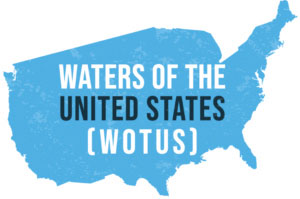
On August 29, 2023, the Environmental Protection Agency (EPA) and Army Corps of Engineers (Corps) released a revision to the definition of water of the United States (WOTUS) that significantly curtails the agencies’ authority to require permits for development or work in certain waters and wetlands. Under the Revised WOTUS Rule, intrastate wetlands are jurisdictional only if they have a “continuous surface connection” to a traditional navigable water, impoundment, or a relatively permanent tributary to a traditional navigable water.
The Revised WOTUS Rule has two significant changes. First, it limits the extent of wetlands that are jurisdictional under the Clean Water Act (CWA).[3] Second, it eliminates the “significant nexus standard” under which waters that “significantly affect the chemical, physical, or biological integrity of traditional navigable waters” were previously considered jurisdictional.
Zippy Duvall, president of the American Farm Bureau Federation, commented, “We’re pleased the vague and confusing ‘significant nexus’ test has been eliminated as the Supreme Court dictated. But EPA has ignored other clear concerns raised by the Justices, 26 states, and farmers across the country about the rule’s failure to respect private property rights and the Clean Water Act.”
NAM’s Timmons: “We Are Very Concerned About the Onslaught of Regulations in the U.S.”
“There are a few good things coming from [the Biden] administration”—including the CHIPS and Science Act and historic infrastructure investment—but there are also several trends that spell trouble for manufacturing in the U.S., NAM President and CEO Jay Timmons said on CNBC’s “Squawk Box” August 9th. “On the one hand we have a manufacturing strategy that Congress and the administration have been putting forward, which is … to prioritize growing manufacturing here in the United States,” Timmons told CNBC’s Andrew Ross Sorkin.
“But … you’re compounding that with three things. One is the [number] of regulations coming down. … [Two is] slow permitting, which is making it difficult for manufacturers to build those facilities they’re willing to invest in. Thirdly, [in] some of the provisions that have been enacted, there’s been confusing guidance or no guidance when it comes to accessing the funds and credits that are available for manufacturing. All three of those things together are making it very difficult for manufacturers to compete and succeed in our global economy.”
LABOR, EMPLOYMENT AND WORKFORCE DEVELOPMENT
DEI Major Factor in Job Decisions for Candidates
Diversity, equity, and inclusion (DEI) is still a key factor for 53% of U.S. workers when considering a company for employment, according to research from Eagle Hill Consulting. Age is a factor in this perception as it’s important to Gen Z at 77% compared to Millennials at 63%.
When considering a new job, employees say it is important that there are employees they identify with (63%), leaders they identify with (59%), and that DEI is a priority for the CEO (52%). During the recruitment process, workers say it is important to hear that employee perspectives are valued (85%), employees feel safe bringing their authentic self to work (80%), leadership has transparent decision making (80%), and the company has a collaborative culture (75%).
However, employers have to catch up to address their workers’ needs. Only 29% of employees say their company has taken more action in the past six months to demonstrate its commitment to DEI. Some segments of the workforce, however, report that their employers have taken more steps on DEI, including workers who identify as having a physical impairment (46%), LGBTQ (40%), military veterans (40%), and neurodiverse (39%).
Education Secretary Cardona: America’s Higher Education System is ‘Broken’
America’s education landscape can feel like a battlefield with wars being waged over reading, cultural issues, school funding, and college admission processes. But, at a breakfast with reporters hosted by The Christian Science Monitor, Education Secretary Miguel Cardona emphasized the need for a level playing field as students from all walks of life move from early childhood programs through college or apprenticeship training. Calling out the latter, he says the nation has a “broken higher education system.”
Runaway costs, he says, have saddled too many people with student loan debt or prevented them from stepping foot into a college or university altogether. “We’re banking on the fact that if we open doors to higher education, not only are our families going to be better, but our country is going to be better,” Dr. Cardona says. As a new academic year gets underway – with stubborn pandemic-era challenges and an election year around the corner.
Why Labor Shortages Aren’t Going Anywhere

Hiring at U.S. small businesses with fewer than 50 employees has slowed for five straight months, according to data from Paychex and IHS Markit, but ADP President Steve Mucci said, that has more to do with a lack of applicants than a reflection of small businesses pulling back.
“For small businesses, the toughest thing is they have the demand, and they have the need for workers — they just have a little bit harder time finding it,” he said. That is counter to what is happening at some larger companies. In August, private payrolls grew by 132,000, a drop from the 268,000 gain seen in July, according to ADP’s monthly payroll report.
Manufacturing Labor Productivity Rebounds in Q2, Remains Sluggish
Manufacturing labor productivity rose 2.9% at the annual rate in the second quarter, rebounding after declining in the previous three quarters and the largest quarterly gain in two years. Yet, labor productivity in the sector was estimated originally to be up 4.0% for the quarter. Similarly, output in the sector increased 0.8% following declines in the two prior quarters.
At the same time, the number of hours worked fell 2.1%, with hourly compensation jumping 8.0% in the second quarter. Unit labor costs among manufacturers increased 4.9%, rising for the ninth straight quarter.
Labor productivity for durable goods rose 4.5% in the second quarter, the first increase in one year, with output expanding 3.2%. Nondurable goods labor productivity rose a modest 2.0%. Manufacturing sector labor productivity has increased at an annual rate of 0.2 percent during the current business cycle, which began in the fourth quarter of 2019. This rate reflects output and hours worked growing at annual rates of 0.3 percent and 0.1 percent, respectively.
This slow productivity growth rate follows the 0.0-percent annual rate of growth during the last business cycle that spanned the fourth quarter of 2007 through fourth-quarter 2019.
Hochul Signs Bills on ‘Captive Meetings,’ Wage Theft, Injury Compensation
In September Governor Kathy Hochul signed a package of legislation into law aimed at protecting employees in the workplace.
- One measure prohibits employers from disciplining employees who decide not to participate in meetings about the employer’s political or religious views. The bill curtails an employer’s ability to hold captive audience meetings, which are mandatory meetings held by an employer during working hours to discuss union organizing. Captive audience meetings have been a commonplace practice used by employers to communicate information to their workforce about the impacts of unionization in the workplace during the course of an organizing attempt by a union.
- Another piece makes wage theft a form of larceny and lets prosecutors seek stronger criminal penalties against employers who steal wages from their workers.
- A third piece of legislation increases the minimum benefits for workers’ compensation for low-wage workers who are injured and are unable to work. The third bill increases the minimum benefits for workers’ compensation to help low-wage workers who may be injured and cannot work. Starting in 2024, the minimum benefits for permanent or temporary partial disability will be $275 weekly and will be increased to $325 in 2025 and increased to one-fifth of the state average weekly wage in 2026.
Major labor unions throughout the state heralded the bill signings.
NLRB Paves Way for Workers to Unionize Without Formal Elections
The U.S. National Labor Relations Board in August resurrected key elements of a policy it eliminated more than 50 years ago requiring businesses that commit labor law violations to bargain with unions without holding formal elections.
The board’s 3-1 decision in a case involving building materials company Cemex Construction Materials could provide a major boost to unions by allowing them to represent workers in certain cases when a majority sign cards in support of unionizing, rather than going through the lengthy and often litigious election process.
The decision came one day after the NLRB announced a final rule reviving Obama-era regulations designed to speed up the union election process, which is seen as giving an advantage to unions.
Dutchess Community College Opens State-of-the-Art Mechatronics Lab In Fishkill
The Mechatronics Lab at DCC, located at the intersection of U.S. Route 9 and Interstate 84 in Fishkill, will officially open its doors this fall. This 6,000-square-foot facility is equipped with cutting-edge technology and comprises three labs dedicated to hands-on training in four core areas: automation, electrical, HVAC, and mechanical.
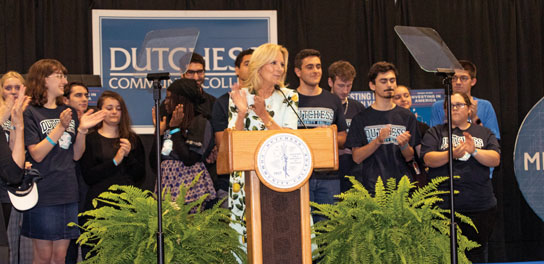
Developed collaboratively with industry partners including the Council of Industry, IBM, Onsemi, eMagin, and MPI, the Mechatronics Lab will provide a range of programs, catering to students seeking academic credits and those pursuing non-credit options. Professionals already active in the field can enhance their abilities, while newcomers can acquire the technical skills necessary to kickstart their careers.
DCC offers short-term, industry-recognized credentials in topics ranging from pneumatics to robotics, and now, students can pursue DCC’s certificate program in air conditioning/refrigeration and associate degree in electrical technology. With more trainings to come, such as Certified Production Technician (CPT) Plus and Certified Technician – Supply Chain Automation (CT-SCA) certifications, the Mechatronics Lab will establish itself as the premier training and manufacturing hub of the Mid-Hudson Valley.
U.S. Salary Increase Budgets Hit 20-Year High
Increases to salary budgets rose to 4.4% on average this year, slightly higher than earlier projections of 4.1%, and also marking the highest level since the 2001 peak of 4.5%, according to a WorldatWork survey released last week of more than 2,000 U.S. employers.
Last year, salary increase budgets stood at 4.1%. A tight labor market and cautious economic optimism contributed to the increase, according to Liz Supinski, director of research and insights at WorldatWork.
Budgets are expected to slightly drop next year, to 4.1%, according to the survey. The forecasted 2024 decline, she adds, may also be the result of an easing of the intensity of the labor market pressures as the impact of economic policy decisions filters out.
In addition to salaries rising across the globe this year, employers are scaling back on layoffs, according to the WorldatWork survey. This year, 70% of employers worldwide reported no layoffs and a whopping 91% expect the same for 2024.
Annual Luncheon & Expo November 17th – FBI Cybersecurity Expert to Keynote, Leadership Certificate Recipients Recognized
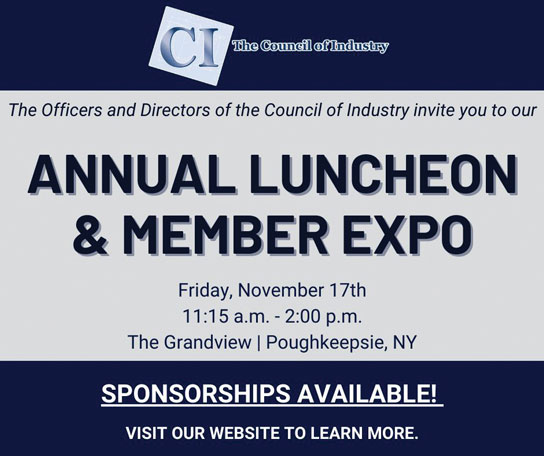
The Council of Industry’s Annual Luncheon & Member Expo will be held on Friday, November 17th at the Grandview in Poughkeepsie, NY. The Event will open with the Member Expo beginning at 11:15. The Luncheon program begins around noon with the presentation of Manufacturing Leadership Certificates to more than 40 individuals who have completed the program since last year’s event.
Lunch and a Keynote address from Michael Pollice Special Agent Strategic Partnership & Domestic Security Alliance Council (DSAC) Coordinator. DSAC is a public-private partnership offered by the Federal Bureau of Investigation’s Office of Private Sector and the Department of Homeland Security’s Office of Intelligence and Analysis that enhances communication and promotes the timely and effective exchange of security and intelligence information between the federal government and the private sector.


